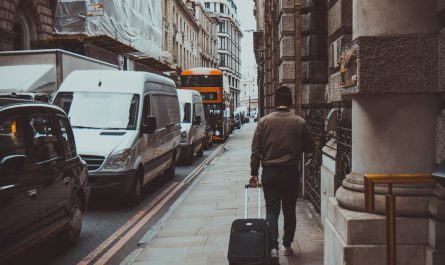In a post-apocalyptic world, the importance of gas masks cannot be overstated. With the air contaminated by toxic chemicals, radiation, and other harmful substances, a gas mask is essential for survival. Without proper protection, individuals would be at risk of inhaling dangerous particles that could lead to respiratory issues, illness, or even death. Gas masks provide a barrier between the wearer and the hazardous environment, allowing them to breathe safely and navigate through the harsh conditions of a post-apocalyptic world.
Furthermore, gas masks also serve as a symbol of resilience and preparedness in the face of adversity. In a world where resources are scarce and danger lurks around every corner, those who possess a gas mask demonstrate their commitment to survival and their ability to adapt to the new reality. Gas masks are not only a practical tool for protection but also a psychological reassurance for individuals in a post-apocalyptic world, giving them a sense of control and security amidst chaos and uncertainty.
Key Takeaways
- Gas masks are essential for survival in a post-apocalyptic world, providing protection from toxic air and airborne contaminants.
- Drawing a gas mask can be broken down into simple steps, making it accessible for artists of all skill levels.
- Materials needed for drawing a gas mask include paper, pencils, erasers, and reference images for inspiration.
- Adding detail and realism to your gas mask drawing can be achieved through careful observation of real gas masks and attention to texture and shading.
- Customizing your gas mask drawing for different apocalypse scenarios allows for creative expression and exploration of different survival themes.
Step-by-Step Guide to Drawing a Gas Mask
Drawing a gas mask can be a creative and engaging activity that allows artists to explore the themes of survival, resilience, and the post-apocalyptic world. To begin, start by sketching the basic shape of the gas mask, including the main body, the eye pieces, and the filter canisters. Pay attention to the proportions and angles to ensure that the gas mask looks realistic and visually compelling. Next, add details such as straps, buckles, and other elements that contribute to the functionality and design of the gas mask. These details will help bring the drawing to life and make it more visually interesting.
Once the basic structure and details are in place, focus on shading and adding depth to the drawing. Use different shading techniques to create highlights and shadows, giving the gas mask a three-dimensional appearance. Pay attention to the materials and textures of the gas mask, such as rubber, metal, and glass, and use shading to convey these elements realistically. Finally, add any additional embellishments or customizations to personalize the gas mask and make it unique to the artist’s vision.
Materials Needed for Drawing a Gas Mask
To create a realistic and detailed gas mask drawing, artists will need a variety of materials to bring their vision to life. First and foremost, a high-quality sketchbook or drawing paper is essential for creating the foundation of the gas mask drawing. Additionally, artists will need a range of drawing pencils in different grades to achieve varying levels of darkness and precision in their sketches. A good eraser is also crucial for correcting mistakes and refining the details of the gas mask.
In addition to traditional drawing materials, artists may also want to consider using specialized tools such as blending stumps or tortillons to create smooth transitions between different shades and textures. These tools can help artists achieve a more polished and professional look in their gas mask drawing. Finally, artists may choose to use colored pencils or markers to add color and vibrancy to their gas mask drawing, bringing it to life with unique hues and tones.
Tips for Adding Detail and Realism to Your Gas Mask Drawing
| Detail/Realism Technique | Description |
|---|---|
| Study Reference Images | Look at real gas masks or high-quality photos to understand the details and textures. |
| Focus on Textures | Pay attention to the different materials such as rubber, metal, and glass in the gas mask. |
| Highlight Wear and Tear | Add scratches, dents, and weathering to make the gas mask look used and realistic. |
| Emphasize Straps and Buckles | Detail the straps and buckles to show how the gas mask is worn and secured. |
| Consider Lighting and Shadows | Use shading to create depth and show how light interacts with the different parts of the gas mask. |
Adding detail and realism to a gas mask drawing is essential for creating an impactful and visually striking piece of art. One effective technique for achieving this is paying close attention to the small details of the gas mask, such as screws, bolts, and other mechanical elements. These details can add depth and complexity to the drawing, making it more visually interesting and realistic. Additionally, artists can use reference images of real gas masks to study the intricate details and textures, helping them accurately capture these elements in their drawing.
Another important aspect of adding detail and realism to a gas mask drawing is focusing on texture. Different materials such as rubber, metal, and glass make up a gas mask, each with its own unique texture that can be conveyed through shading and line work. By carefully observing these textures and incorporating them into the drawing, artists can create a more convincing representation of a gas mask. Finally, paying attention to lighting and shadow can also enhance the realism of a gas mask drawing, creating depth and dimension that brings the artwork to life.
How to Customize Your Gas Mask Drawing for Different Apocalypse Scenarios
Customizing a gas mask drawing for different apocalypse scenarios allows artists to explore various themes and narratives within their artwork. For example, for a nuclear apocalypse scenario, artists may choose to add radiation symbols or hazard signs to the gas mask, indicating the specific dangers present in this post-apocalyptic world. Similarly, for a biological outbreak scenario, artists could incorporate biohazard symbols or medical equipment into the design of the gas mask, reflecting the unique challenges posed by this type of apocalypse.
In addition to visual elements, artists can also customize their gas mask drawing through storytelling and symbolism. For example, adding scratches or wear-and-tear to the gas mask can convey a sense of survival and resilience in the face of adversity. Artists may also choose to incorporate personal symbols or motifs that hold significance for them, adding layers of meaning and depth to their artwork. By customizing their gas mask drawing for different apocalypse scenarios, artists can create compelling narratives that resonate with viewers on an emotional level.
Using Color and Texture to Bring Your Gas Mask Drawing to Life

Color and texture play a crucial role in bringing a gas mask drawing to life, adding vibrancy and depth to the artwork. When choosing colors for a gas mask drawing, artists should consider the materials and environment of the post-apocalyptic world they are depicting. For example, using muted tones and desaturated colors can convey a sense of decay and desolation in a post-apocalyptic setting, while brighter colors may be used to symbolize hope or resilience amidst adversity.
In addition to color, texture is another important element that can enhance the visual impact of a gas mask drawing. Artists can use various shading techniques to create different textures such as metal, rubber, or glass, adding realism and tactile quality to the artwork. By paying attention to these details and incorporating them into their drawing, artists can create a more immersive and engaging representation of a gas mask in a post-apocalyptic world.
Displaying and Sharing Your Gas Mask Drawing in a Post-Apocalyptic Art Gallery
Once completed, displaying and sharing a gas mask drawing in a post-apocalyptic art gallery can provide artists with an opportunity to showcase their work and connect with like-minded individuals who share an interest in post-apocalyptic themes. When preparing their artwork for display, artists should consider framing their gas mask drawing in a way that complements its style and theme. Additionally, providing viewers with information about the inspiration behind the artwork can help them better understand and appreciate the artist’s creative vision.
Sharing a gas mask drawing in a post-apocalyptic art gallery also allows artists to engage with other creators and enthusiasts who are passionate about similar themes. By participating in gallery events or exhibitions focused on post-apocalyptic art, artists can connect with a community of like-minded individuals, exchange ideas, and gain inspiration from others’ work. Furthermore, sharing their artwork in this context can help artists reach a wider audience who appreciate post-apocalyptic themes and are eager to engage with thought-provoking and visually compelling artwork.
If you’re interested in learning more about the history and significance of gas masks, check out this article on the Sacramento NAACP website here. The article delves into the development of gas masks and their use in various historical events, shedding light on their importance in protecting individuals from harmful gases and chemicals. It’s a fascinating read for anyone intrigued by the design and function of gas masks.
FAQs
What is a gas mask drawing?
A gas mask drawing is a visual representation of a gas mask, typically created using various artistic techniques such as pencil, pen, charcoal, or digital illustration.
What is the purpose of a gas mask drawing?
The purpose of a gas mask drawing can vary, but it is often used to convey a sense of protection, survival, or the impact of war and conflict. It can also serve as a symbol of resilience and preparedness.
What are some common elements found in gas mask drawings?
Common elements found in gas mask drawings include the mask itself, often with detailed features such as filters, straps, and valves. Additionally, artists may incorporate elements such as smoke, destruction, or other symbolic imagery to convey a specific message.
What are some popular styles of gas mask drawings?
Gas mask drawings can be created in various styles, including realistic, surreal, abstract, and comic book-inspired. The choice of style often depends on the artist’s intention and the message they want to convey through the drawing.
Are gas mask drawings used for any specific purposes?
Gas mask drawings are often used in art exhibitions, galleries, and as illustrations in books, posters, and other forms of media. They can also be used as a form of protest art or as a means of raising awareness about issues related to war, environmental disasters, or societal concerns.



